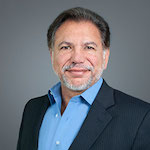Adult Stem Cell Therapy & Platelet Rich Plasma
Can Stem Cells Really Repair Regenerate Cartilage Injuries?
Dr. Bennett, has for years, been quietly using adult stem cells to regenerate cartilage. Cartilage is the “cap” of tissue that is on the ends of each long bone in all of our joints. If you have ever had a chicken drumstick and noticed a white “cap” on the end of the bone, this is what human articular cartilage also looks like. Cartilage provides for a sliding mechanism so our joints glide and move smoothly and provides for a shock-absorbing mechanism.
Types of Stem cells
Stem cells include fetal, embryonic, placental and adult, to name just a few. Interestingly, all humans have adult stem cells. In fact tissue in the human body has some type of stem cell………even heart and brain tissue. Adult stem cells, unless engineered can’t create sperm or egg and thus avoid any ethical discussion. In fact, adult stem cells can be readily available in our bodies.
There are 3 main types of stem cells utilized in orthopedics, albeit, many orthopedic surgeons don’t use stem cells. Bone marrow derived, fat or adipose derived and synovial stem cells are utilized. Some advertising promotes PRP as stem cell therapy. In fact, PRP, or platelet enriched plasma, a concentration of platelets from your own blood, does indeed have stem cells, blood or hematopoietic stem cells. However, these cells are not good for cartilage, ligament or tendon repair.
Bone Marrow derived stem cells in orthopedics
At Bennett Orthopedics and Sportsmedicine. Regenerating the Youth in You! We use only bone marrow derived stem cell, presently for cartilage, ligament and tendon repair.
So! How did we get here? Early use of adult or equine(horse-derived) stem cells have been successfully utilized in some of the Kentucky Derby, Preakness and Belmont stakes competitors.
While this is an arthroscopic photo of a knee surgery in a 24 year old athlete, this depicts what an acute cartilage injury looks like.
From there, animal models have been developed. Interestingly, aside from using too many stem cells-which can contribute to loose bodies in the joint, Dr. Bennett notes that he has never seen a negative study with respect to tissue healing. See below, Dr. Fortier a Veterinarian from Cornell University has actually, and because of her contributions in this area, been the President of the International Cartilage Repair Society-for humans and based out of Switzerland.
Concentrated Bone Marrow Aspirate Improves Full-Thickness Cartilage Repair Compared with Microfracture in the Equine Model. Investigation performed at Cornell University College of Veterinary Medicine, Ithaca, and the Hospital for Special Surgery, New York, NY Conclusions: Delivery of bone marrow concentrate can result in healing of acute full-thickness cartilage defects that is superior to that, after microfracture alone, in an equine model. Clinical Relevance: Delivery of bone marrow concentrate to cartilage defects has the clinical potential to improve cartilage healing, providing a simple, cost-effective, arthroscopically applicable, and clinically effective approach for cartilage repair. J Bone Joint Surg Am. 2010;92:1927-37
Stem cells often are mixed with a scaffold so the cells stay in the general vicinity of the damaged tissue. A study from Singapore has shown that Adipose Derived Stem Cells, which are fat derived, can aid in cartilage regeneration when used with a resorbable scaffold.
Evaluation of Intra-Articular Mesenchymal Stem Cells to Augment Healing of Microfractured Chondral Defects-Steadman/Philippon Research Institute- Conclusions: This study confirms that intra-articular BMSCs enhance cartilage repair quality with increased aggrecan content and tissue firmness. Clinical Relevance: Clinical use of BMSCs in conjunction with microfracture of cartilage defects may be potentially beneficial.
Dr. Bennett has performed simple stem cell injections into joints for patients who do not want surgery with very promising results. However, he notes that given the opportunity to combine adult bone marrow derived stem cells with various types of cartilage surgery that he performs, he can regenerate near normal cartilage. Some of these techniques include using stem cells with microfracture of substituting stem cells for a MACI or AMIC procedure, a type of carticel procedure which incorporates a membrane over the cells to hold the cells in place.
Outcomes After a Single-Stage Procedure for Cell-Based Cartilage Repair A Prospective Clinical Safety Trial With 2-year Follow-up Brian J. Cole -Conclusion: The first clinical experience in using CAIS for treating patients with focal chondral defects indicates that it is a safe, feasible, and effective method that may improve long-term clinical outcomes. Keywords: cartilage; knee; arthroscopy; tissue engineering; magnetic resonance. American Journal of Sports Medicine, Vol. 39, No. 6
Autologous Bone Marrow-Derived Mesenchymal Stem Cells Versus Autologous Chondrocyte Implantation An Observational Cohort Study –Singapore-Conclusion: Using BMSCs in cartilage repair is as effective as chondrocytes for articular cartilage repair. American Journal of Sports Medicine, Vol. 38, No. 6
The Use of Bone Marrow Aspirate Concentrated for Full-thickness Knee Cartilage Lesions in a One-step Procedure: A Prospective Study-Alberto W. Gobbi MD-Milan,Italy,-Conclusion: This study showed that the use of autologous bone marrow derived and collagen I/Ill matrix in a one-step procedure could represent an improvement on the currently available techniques for cartilage transplantation could be a viable technique in the treatment of grade IV knee chondral lesions.
So, locations from New York to Vail, Colorado to Milan, Italy, to Singapore are in communion with this approach. Come to Sarasota, Florida, home of one of the best beaches in the World and have Dr. Bennett administer state of the art adult stem cells for your injuries.
Call 941-404-2703 or fill out our online form.






